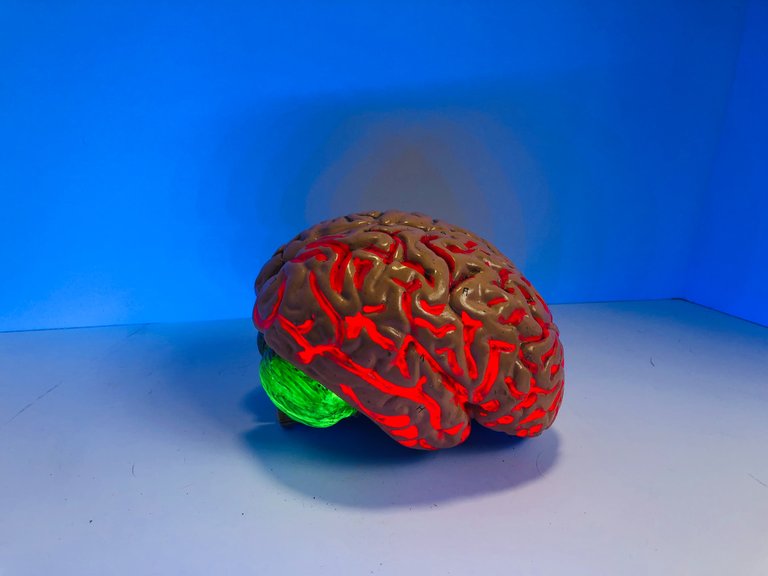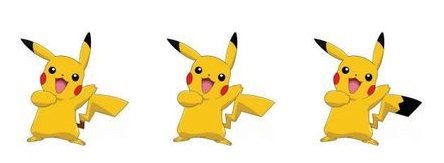
Photo by Natasha Connell on Unsplash
Most of us take it for granted that, give or take, our memories can be trusted. When this is confirmed by others sharing the same memory, this reinforces that belief.
But then we come across the phenomenon known as the Visual Mandela effect, and realise there might be some strange things happening...
If you have never heard of this before, the basic premise is that large swathes of people, all over the globe, remember certain images or facts differently to reality. At first glance it may not seem that strange, until you understand the same false memory is actually shared by all those people.
To give you a quick example, as a picture is worth a thousand words, take a look at the images below. These were part of the first scientific study into the phenomenon, run by Deepasri Prasad and Wilma A Bainbridge, of the University of Chicago. This shows three different depictions of the well-known logo for 'Fruit of the Loom'.

Image by the University of Chicago
Looking at these, which one do you think is the correct logo?
For myself, I would have said, with 95% certainty that the correct image is the one on the right, as it is the only one with the cornucopia, and I specifically remember the cornucopia.
However it turns out I am completely wrong, the logo has NEVER featured a cornucopia. But the point is I am not alone in thinking this, the idea is shared across many, many people, all over the world.
This is just one example of many, and I've included some links at the bottom of this post to many more if you want to go on a deep dive, and potentially end up questioning the very nature of your reality...
The name of the phenomenon comes from Nelson Mandela, the first president of South Africa and well-known anti-apartheid activist. Mandela died in 2013, but many people around the world were sure he died in prison in the 1980s. Again, this is one I can actually attest to, I would have sworn I saw it reported on the news some time in the late 80s, or possibly early 90s, but of course this never happened.
Now for the first time, a pair of scholars based in the University of Chicago have produced the first scientific research on the phenomenon. Their paper is currently still in pre-print at the time of writing this post - you can find it here in full, and it should soon be published in the scientific journal Psychological Science.
Here's another quick example..

Image by the University of Chicago
Which one is the right one of these three? If you think the first, and Rich Uncle Pennybags (that's right, he is not called Mr Monopoly) had a monocle...you would be absolutely wrong, and are experiencing the Mandela Effect.
Anyway, on with the research...
The intrepid university researchers took 40 pop culture logos and icons and then create two false counterparts. The researchers then modified one of the two incorrect options away from what was commonly misremembered to help test theories, and try and work out what was happening.
The aims were to work out how common, and consistent the Visual Mandela Effect was and discover underlying causes. They did this by quantifying how common the false memory images were in the world, and experimenting to see if people spontaneously produce the errors when drawing. If asked to draw an specific logo from memory, do they make the same errors as when choosing the proper logo through recognition?
“We found that there really is a strong effect where people are reporting a false memory for an image they actually have never seen—because you’ve never seen Pikachu with a black tip on the tail,” Bainbridge says. “What’s more is that people tend to be very confident in picking this wrong image. And they also report that they’re pretty familiar with characters like Pikachu, yet they still make these errors.”
The researchers don’t offer up a sole reason for the phenomenon, but they’ve eliminated some theories. First, they don’t believe people are looking at images differently, because even when viewing a correct version, people often gravitate toward the mistaken option. And they don’t think we’re simply filling in information that’s missing based on our associations, which is known as schema theory.

Image by the University of Chicago
“They could have picked the correct Fruit of the Loom logo, the Fruit of the Loom logo with the cornucopia, or the Fruit of the Loom logo with a plate underneath it,” Prasad says. “The fact that they chose cornucopia over plate, when plates are more frequently associated with fruit, is evidence against the idea that it’s just the schema theory explaining it.”
With so many different cultures, beliefs, and different levels of exposure to pop culture imagery, one would be rational to think we would have quite a few idiosyncratic differences in our memories. But it turns out we share the same false memories, consistently across test cases.
The research paper does not offer real explanations as to why, only confirms the shared false memories are real. Whatever the reason, theories about, some pretty wild.
Maybe it's proof we live in a simulation, or a multiverse, and we didn't originally all live in the same reality, maybe it's a deliberate and sinister plot to control our minds. It is currently impossible to know the real reason, but it's great the world is beginning to accept that it is a valid, unexplained phenomenon.
To find more examples of the Mandela Effect, check out the links below, and be honest with what incorrect things you 'remember'.
44 Mandela Effect examples that are seriously mind-bending
Have a look at this amazing, and slightly unnerving phenomenon.
Then let me know what you think.